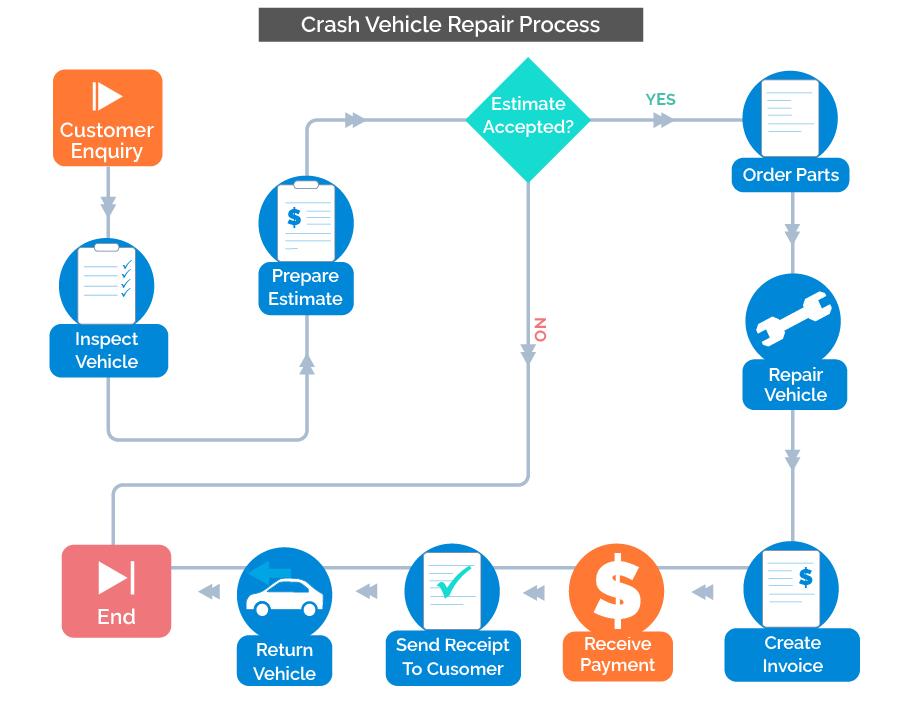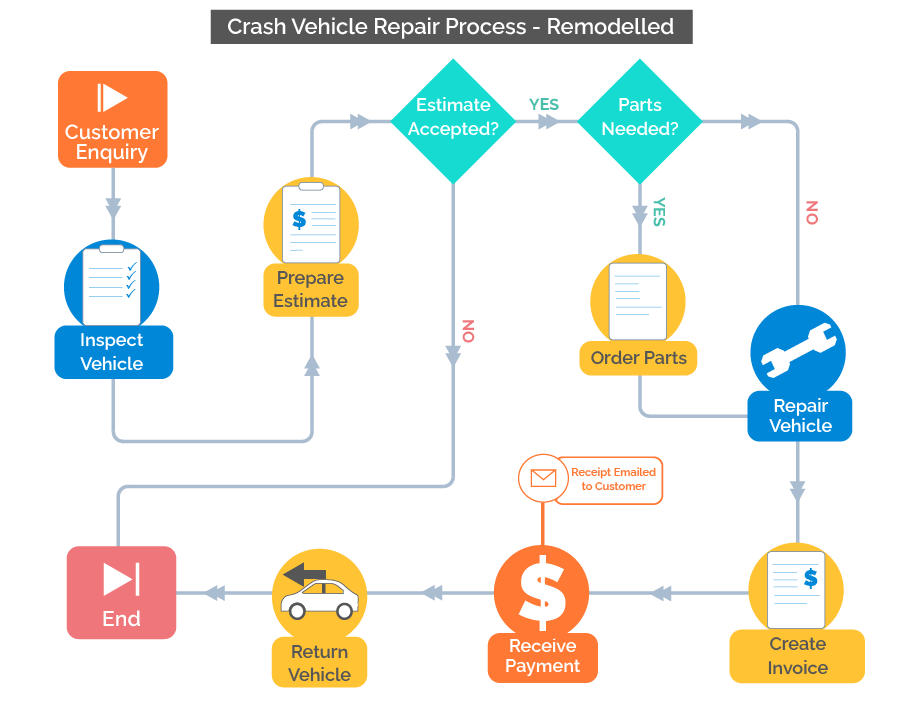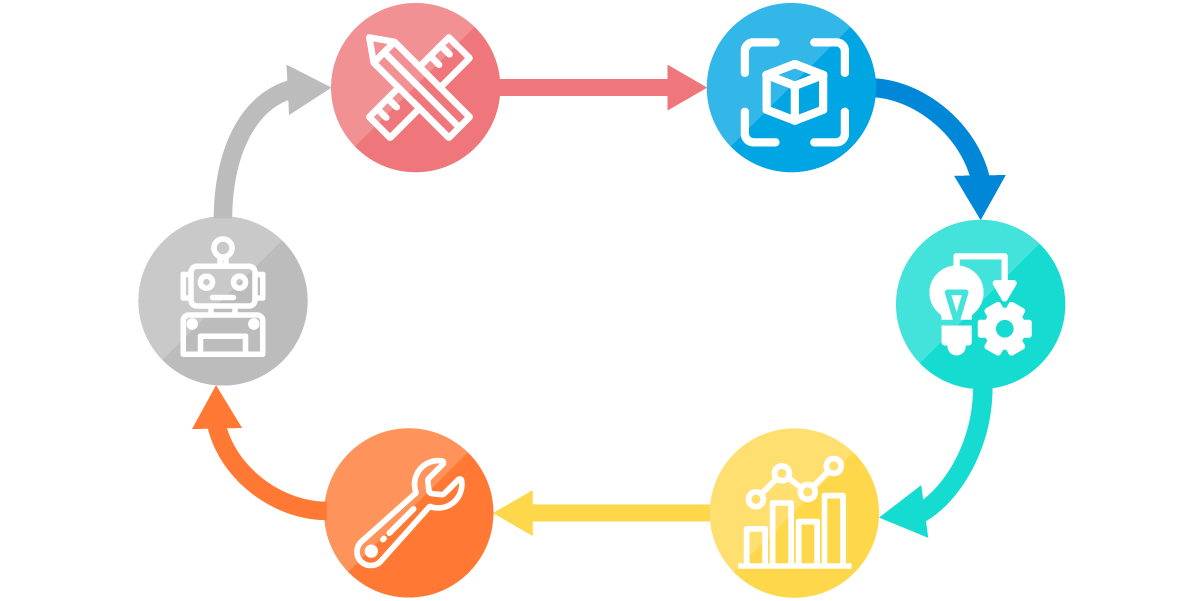What Is Business Process Management?
Every business has processes that it needs to manage in order to operate effectively. These processes can vary in complexity ranging from the assembly of a product on a production line, to the repair of a vehicle in a garage.
Business Process Management (BPM) is a business performance practice for controlling and analysing processes, with a goal of maximising their efficiency and effectiveness. Whilst in essence BPM is not a technology, many companies offer solutions to make BPM easier to incorporate into your business.
So, BPM is just for increasing efficiency in business? Sounds easy! Well not necessarily.
The fact remains that many organisations have fragmented and disjointed ways of undertaking and managing these processes. The “if it ain’t broke don’t fix it” approach can often lead to rigidity or apprehension for undertaking such an exercise, thus restricting a business’ ability to evolve.
Add into the mix a prevalence of non-digital procedures and a paper-reliant approach to business processes and the difficulties involved can escalate further.
Yet by embracing and incorporating BPM software into your business, not only can you reap the rewards of having full visibility of your business processes from start to finish, but also potentially discover leaner, more agile ways of working.
What are the main components of Business Process Management?
BPM is usually comprised of a set of techniques that are implemented over a defined period. These techniques can be organised into the following stages:
1) Design & Analysis
- how is the process performing in its current format?
- what is the process’ ideal structure?
- what are the key KPIs?
2) Re-designing and modelling
- building on the analysis from step 1, how could the workflow be redesigned to achieve a better result?
- how does the process perform in a variety of scenarios?
3) Implementation
- once the process has been remodelled, it is time to execute and test the newly modelled version.
4) Monitoring
- how did the redesigned process perform?
- were there any design flaws or bottlenecks?
5) Management and Optimization
- return to stage 1 and continue to optimize.
6) Automation (optional)
- this step is often seen as the pinnacle to business process management due to the improved efficiencies that can be obtained by automating your processes.
Why is Business Process Management Important?
First things first, BPM should not be viewed as a one-time exercise or “fix”. The practice should be an ongoing transformational exercise that has the potential to compound results over time.
Businesses should always be looking to better align their functions or offerings with their customer’s needs in order to increase customer satisfaction. BPM can enable businesses to achieve this whilst also offering better visibility and management of company resources.
How to apply BPM to a business
In the following example, we are going to apply business process management principles to a fictional business, Crash Vehicle Repair (CVR).
We will work through the stages of BPM to map out Crash Vehicle Repair’s process of repairing a customer’s vehicle, from quoting the customer through to returning the repaired vehicle back to the customer.
Crash Vehicle Repair – 1. Design & Analysis
First things first, BPM should not be viewed as a one-time exercise or “fix”. The practice should be an ongoing transformational exercise that has the potential to compound results over time.
- A customer contacts CVR to request a quote for repairing a damaged vehicle.
- CVR inspects the vehicle.
- CVR prepares an estimate and sends it to the customer.
- If the estimate is refused by the customer, the process ends.
- If the estimate is accepted by the customer, CVR orders parts to fix the vehicle.
- CVR completes the vehicle repairs.
- An invoice is generated.
- Customer completes the payment.
- CVR sends a copy of the payment receipt to the customer.
- CVR returns vehicle to the customer.
- Process ends
Next, we map out the above stages into a workflow.
- Tasks marked in orange are to be completed by the customer.
- Tasks marked in blue are completed by Crash Vehicle Repair’s owner Tom and his daughter Rachel.

After analyzing this process, CVR identified that the tasks “Prepare Estimate”, “Order Parts” and “Create Invoice” are taking longer than required due to Tom’s knowledge and skill level of using computer software.
Additionally, the “Send Receipt to Customer” task is currently completed manually, either by printing a copy of the receipt and giving it to the customer in person.
As both Tom and Rachel are working on the same tasks together throughout the entire workflow, these bottlenecks increase the time needed to complete the entire process, as a task cannot be started until the previous task has been completed.
Crash Vehicle Repair – 2. Redesigning and modelling
To remove the beforementioned bottlenecks, the process has been remodelled to enable Rachel to complete the following tasks:
- Prepare Estimate
- Order Parts
- Create Invoice
- Return Vehicle
By assigning Tom and Rachel to undertake specific tasks throughout the workflow, both team members can work on tasks simultaneously whilst also making use of their strongest skillsets.
CVR have also implemented BPM software to send customer payment receipts automatically once payment has been received.
In the following Crash Vehicle Repair Process – Remodelled example, tasks are represented with the following attributes:
- Tasks marked in orange are to be completed by the customer.
- Tasks marked in blue are completed by Crash Vehicle Repair’s owner, Tom.
- Tasks marked in yellow are completed by Rachel.

Crash Vehicle Repair – 3 & 4. Implementation & Monitoring
After implementing the remodelled process and monitoring over a period of two months, Crash Vehicle Repair was able to increase its capacity by an additional 3 customers per week.
This increase in operational efficiency was largely due to the separation of tasks, as Tom could use his mechanical knowledge of vehicles during the inspection and repair vehicle tasks, whilst Rachael could utilize her proficiency with computer software and customer service.
Whilst CVR saw an improvement in their capacity to serve customers, they were still having to turn down an average of 2 customers per week. This presents an opportunity to further optimize the process to meet this customer demand.
Crash Vehicle Repair – 5. Management & Optimization
After implementing the remodelled process, a new bottleneck was identified within the “Order Parts” tasks as there was no specified template for format.
To combat this newly discovered bottleneck, CVR would return to stage 1 and work through all the stages once again in an attempt to further increase their operational efficiency.
How to determine if BPM software is right for your business
If you are looking to implement BPM software into your business for the first time, there are several considerations that can help determine if BPM is right for your business.
- Do you experience slow approval processes?
Approvals are a necessity in most businesses. However, without a dedicated approval management system, obtaining the required sign-offs can produce bottlenecks which in turn result in delays that are felt throughout the entire workflow.
With BPM software such as Kradle, automated notifications can be added into your workflow to notify and remind key decision makers that a particular task is awaiting their action either via email or SMS. These notifications can help reduce task idle time and in turn increase productivity.
- Are you too reliant on paper or have trouble managing files?
Coordinating PDFs, excel spreadsheets, word documents and paper-based forms throughout a process can quickly lead to inaccuracies and discrepancies between file versions.
For companies that have a disjointed file-management structure, implementing BPM software can ensure that the correct files and documents are retained throughout the entire workflow.
- Are you experiencing inconsistent results?
Ensuring processes are completed on time and to a consistent level of quality is of paramount importance.
By designing and managing processes using BPM software, users can define the structure and requirements tasks within the workflow to ensure that they are completed correctly.
How much does BPM software cost?
As with many software solutions aimed at increasing productivity and efficiency, there are varying levels of skill and investment required to implement BPM software into a business.
Highly specific and customised BPM software can cost hundreds of thousands of dollars to implement.
Kradle however offers users the ability to begin implementing business process management for free.
With a suite of powerful features including SMS and email notifications, job pooling and auditing, Kradle Process Manager allows you to design, edit and manage your processes using an easy-to-use intuitive interface.
Want to learn more about Kradle Process Manager? Read our full list of features and benefits here.
What Is Business Process Management?
Every business has processes that it needs to manage in order to operate effectively. These processes can vary in complexity ranging from the assembly of a product on a production line, to the repair of a vehicle in a garage.
Business Process Management (BPM) is a business performance practice for controlling and analysing processes, with a goal of maximising their efficiency and effectiveness. Whilst in essence BPM is not a technology, many companies offer solutions to make BPM easier to incorporate into your business.
So, BPM is just for increasing efficiency in business? Sounds easy! Well not necessarily.
The fact remains that many organisations have fragmented and disjointed ways of undertaking and managing these processes. The “if it ain’t broke don’t fix it” approach can often lead to rigidity or apprehension for undertaking such an exercise, thus restricting a business’ ability to evolve.
Add into the mix a prevalence of non-digital procedures and a paper-reliant approach to business processes and the difficulties involved can escalate further.
Yet by embracing and incorporating BPM software into your business, not only can you reap the rewards of having full visibility of your business processes from start to finish, but also potentially discover leaner, more agile ways of working.
What are the main components of Business Process Management?
BPM is usually comprised of a set of techniques that are implemented over a defined period. These techniques can be organised into the following stages:
1) Design & Analysis
- how is the process performing in its current format?
- what is the process’ ideal structure?
- what are the key KPIs?
2) Re-designing and modelling
- building on the analysis from step 1, how could the workflow be redesigned to achieve a better result?
- how does the process perform in a variety of scenarios?
3) Implementation
- once the process has been remodelled, it is time to execute and test the newly modelled version.
4) Monitoring
- how did the redesigned process perform?
- were there any design flaws or bottlenecks?
5) Management and Optimization
- return to stage 1 and continue to optimize.
6) Automation (optional)
- this step is often seen as the pinnacle to business process management due to the improved efficiencies that can be obtained by automating your processes.
Why is Business Process Management Important?
First things first, BPM should not be viewed as a one-time exercise or “fix”. The practice should be an ongoing transformational exercise that has the potential to compound results over time.
Businesses should always be looking to better align their functions or offerings with their customer’s needs in order to increase customer satisfaction. BPM can enable businesses to achieve this whilst also offering better visibility and management of company resources.
How to apply BPM to a business
In the following example, we are going to apply business process management principles to a fictional business, Crash Vehicle Repair (CVR).
We will work through the stages of BPM to map out Crash Vehicle Repair’s process of repairing a customer’s vehicle, from quoting the customer through to returning the repaired vehicle back to the customer.
Crash Vehicle Repair – 1. Design & Analysis
First things first, BPM should not be viewed as a one-time exercise or “fix”. The practice should be an ongoing transformational exercise that has the potential to compound results over time.
- A customer contacts CVR to request a quote for repairing a damaged vehicle.
- CVR inspects the vehicle.
- CVR prepares an estimate and sends it to the customer.
- If the estimate is refused by the customer, the process ends.
- If the estimate is accepted by the customer, CVR orders parts to fix the vehicle.
- CVR completes the vehicle repairs.
- An invoice is generated.
- Customer completes the payment.
- CVR sends a copy of the payment receipt to the customer.
- CVR returns vehicle to the customer.
- Process ends
Next, we map out the above stages into a workflow.
- Tasks marked in orange are to be completed by the customer.
- Tasks marked in blue are completed by Crash Vehicle Repair’s owner Tom and his daughter Rachel.

After analyzing this process, CVR identified that the tasks “Prepare Estimate”, “Order Parts” and “Create Invoice” are taking longer than required due to Tom’s knowledge and skill level of using computer software.
Additionally, the “Send Receipt to Customer” task is currently completed manually, either by printing a copy of the receipt and giving it to the customer in person.
As both Tom and Rachel are working on the same tasks together throughout the entire workflow, these bottlenecks increase the time needed to complete the entire process, as a task cannot be started until the previous task has been completed.
Crash Vehicle Repair – 2. Redesigning and modelling
To remove the beforementioned bottlenecks, the process has been remodelled to enable Rachel to complete the following tasks:
- Prepare Estimate
- Order Parts
- Create Invoice
- Return Vehicle
By assigning Tom and Rachel to undertake specific tasks throughout the workflow, both team members can work on tasks simultaneously whilst also making use of their strongest skillsets.
CVR have also implemented BPM software to send customer payment receipts automatically once payment has been received.
In the following Crash Vehicle Repair Process – Remodelled example, tasks are represented with the following attributes:
- Tasks marked in orange are to be completed by the customer.
- Tasks marked in blue are completed by Crash Vehicle Repair’s owner, Tom.
- Tasks marked in yellow are completed by Rachel.

Crash Vehicle Repair – 3 & 4. Implementation & Monitoring
After implementing the remodelled process and monitoring over a period of two months, Crash Vehicle Repair was able to increase its capacity by an additional 3 customers per week.
This increase in operational efficiency was largely due to the separation of tasks, as Tom could use his mechanical knowledge of vehicles during the inspection and repair vehicle tasks, whilst Rachael could utilize her proficiency with computer software and customer service.
Whilst CVR saw an improvement in their capacity to serve customers, they were still having to turn down an average of 2 customers per week. This presents an opportunity to further optimize the process to meet this customer demand.
Crash Vehicle Repair – 5. Management & Optimization
After implementing the remodelled process, a new bottleneck was identified within the “Order Parts” tasks as there was no specified template for format.
To combat this newly discovered bottleneck, CVR would return to stage 1 and work through all the stages once again in an attempt to further increase their operational efficiency.
How to determine if BPM software is right for your business
If you are looking to implement BPM software into your business for the first time, there are several considerations that can help determine if BPM is right for your business.
- Do you experience slow approval processes?
Approvals are a necessity in most businesses. However, without a dedicated approval management system, obtaining the required sign-offs can produce bottlenecks which in turn result in delays that are felt throughout the entire workflow.
With BPM software such as Kradle, automated notifications can be added into your workflow to notify and remind key decision makers that a particular task is awaiting their action either via email or SMS. These notifications can help reduce task idle time and in turn increase productivity.
- Are you too reliant on paper or have trouble managing files?
Coordinating PDFs, excel spreadsheets, word documents and paper-based forms throughout a process can quickly lead to inaccuracies and discrepancies between file versions.
For companies that have a disjointed file-management structure, implementing BPM software can ensure that the correct files and documents are retained throughout the entire workflow.
- Are you experiencing inconsistent results?
Ensuring processes are completed on time and to a consistent level of quality is of paramount importance. By designing and managing processes using BPM software, users can define the structure and requirements tasks within the workflow to ensure that they are completed correctly.
How much does BPM software cost?
As with many software solutions aimed at increasing productivity and efficiency, there are varying levels of skill and investment required to implement BPM software into a business.
Highly specific and customised BPM software can cost hundreds of thousands of dollars to implement. Kradle however offers users the ability to begin implementing business process management for free.
With a suite of powerful features including SMS and email notifications, job pooling and auditing, Kradle Process Manager allows you to design, edit and manage your processes using an easy-to-use intuitive interface.
Want to learn more about Kradle Process Manager? Read our full list of features and benefits here.

